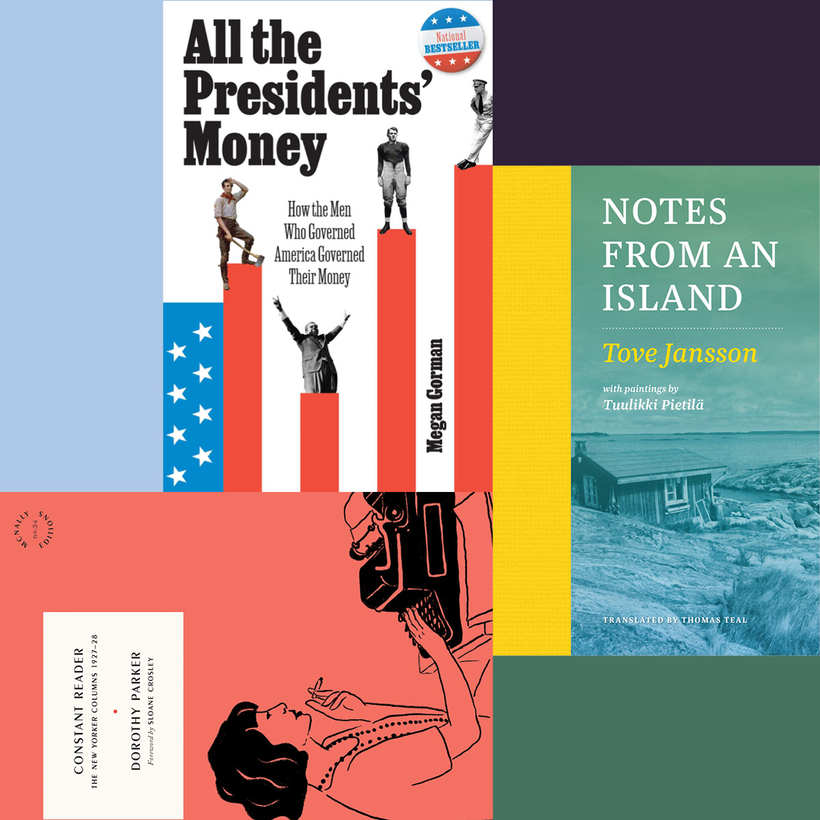We all have our opinions on how presidents have handled affairs of state, but how exactly did they handle their own financial affairs? In this delightful and chatty book, Megan Gorman offers plenty of anecdotes: how a president born wealthy died broke (Thomas Jefferson, whose last correspondence was about buying wine on credit), a president born poor died rich (Lyndon Johnson, who used his government connections to build a tiny Texas radio station bought by his wife for $17,500 in 1942 that netted the family $105 million 30 years after L.B.J. died), and a president addicted to get-rich-quick schemes (that would not be the one you might be thinking of but Ulysses S. Grant, who lost money “selling ice, developing farmland, and investing in a social club in San Francisco”). J.F.K. was wealthy but frugal, Lincoln died without a will, and the Clintons … well, let’s just say they are comfortable thanks to post-presidential speeches and books.
Gorman teases out lessons for all of us on what to do (and not to do) to build wealth, the best lesson being the nation’s most famous peanut farmer, Jimmy Carter. That occupation helped polish his Everyman image, but thanks to the financial acumen of Rosalynn, the peanut operation grew into a 3,100-acre behemoth with a side business in fertilizer. No comment on other presidents whose careers profited from slinging manure.
The author is best known for creating the Moomins, a family of trolls who are very white and very round and look like hippos. Kids love them to this day, but adults may know Tove Jansson better for her novels, especially The Summer Book. Jansson, who died in 2001, spent 26 summers on a rocky, nearly barren island in the Gulf of Finland with her partner, the graphic artist Tuulikki Pietilä. This elegantly produced book began as a collection of etchings and drawings done by Pietilä, accompanied now by the diary entries, notes, and correspondence the author had with a builder and fisherman named Brunström. Jansson brings to life the flora and fauna of their remote home, along with the struggles of living in such an enchanted but storm-battered and fog-enshrouded place. Notes from an Island is a gem.
Can anyone ever get too much of Dorothy Parker? As a reader of AIR MAIL, you know our answer to that, so here is the happy news that McNally Editions is republishing her book column “Constant Reader,” from The New Yorker, a gig that lasted only a year but whose critiques read as fresh and as wonderful as when they first appeared, in the late 1920s, whether praising Ernest Hemingway’s short-story collection Men Without Women while adding a tincture of acid (“He is, to me, the greatest living writer of short stories; he is, also to me, not the greatest living novelist”) or calling Isadora Duncan’s autobiography “abominably written … with veritable Hampton Court mazes of sentences.” And yet, guess what? Parker urges you to buy the book, for “here is a record of a grand person.” And of course there is a famous review of The House at Pooh Corner, with “its frequent droppings into more cadenced whimsy” that Pooh calls a “Hum.” Pooh explains that he chooses certain words to make these ditties more hummy. “And it is that word ‘hummy,’ my darlings, that marks the first place in The House at Pooh Corner at which Tonstant Weader Fwowed up.”
Sloane Crosley provides a witty and perceptive foreword.
Jim Kelly is the Books Editor at AIR MAIl

